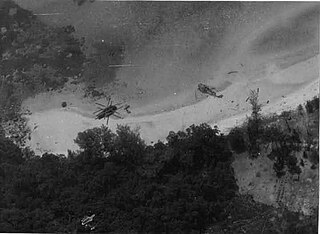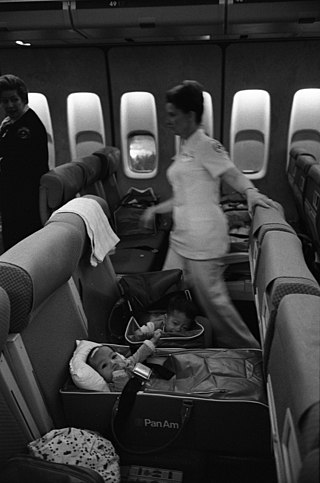
The Vietnam War was a conflict in Vietnam, Laos, and Cambodia from 1 November 1955 to the fall of Saigon on 30 April 1975. It was the second of the Indochina Wars and was a major conflict of the Cold War. While the war was officially fought between North Vietnam and South Vietnam, the north was supported by the Soviet Union, China, and other communist states, while the south was supported by the United States and other anti-communist allies, making the war a proxy war between the United States and the Soviet Union. It lasted almost 20 years, with direct U.S. military involvement ending in 1973. The conflict also spilled over into neighboring states, exacerbating the Laotian Civil War and the Cambodian Civil War, which ended with all three countries officially becoming communist states by 1976.

Lê Đức Thọ, born Phan Đình Khải in Nam Dinh Province, was a Vietnamese revolutionary general, diplomat, and politician. He was the first Asian to be awarded the Nobel Peace Prize, jointly with United States Secretary of State Henry Kissinger in 1973, but refused the award.

Graham Anderson Martin was an American diplomat. He was the ambassador to Thailand and as U.S. representative to SEATO from 1963 to 1967, ambassador to Italy from 1969 to 1973 and the last United States Ambassador to South Vietnam from 1973 until his evacuation during the Fall of Saigon in 1975.

The Mayaguez incident took place between Kampuchea and the United States from 12 to 15 May 1975, less than a month after the Khmer Rouge took control of the capital Phnom Penh ousting the U.S.-backed Khmer Republic. After the Khmer Rouge seized the U.S. merchant vessel SS Mayaguez in a disputed maritime area, the U.S. mounted a hastily-prepared rescue operation. U.S. Marines recaptured the ship and attacked the island of Koh Tang where it was believed that the crew were being held as hostages. Encountering stronger than expected defences on Koh Tang, three United States Air Force helicopters were destroyed during the initial assault and the Marines fought a desperate day-long battle with the Khmer Rouge before being evacuated. The Mayaguez's crew were released unharmed by the Khmer Rouge shortly after the attack on Koh Tang began. The names of the Americans killed, including three Marines left behind on Koh Tang after the battle and subsequently executed by the Khmer Rouge, are the last names on the Vietnam Veterans Memorial.

The Cambodian Civil War was a civil war in Cambodia fought between the forces of the Communist Party of Kampuchea against the government forces of the Kingdom of Cambodia and, after October 1970, the Khmer Republic, which had succeeded the kingdom.

Gerald Ford's tenure as the 38th president of the United States began on August 9, 1974, upon the resignation of president Richard Nixon, and ended on January 20, 1977. Ford, a Republican from Michigan, had been appointed vice president since December 6, 1973, following the resignation of Spiro Agnew from that office. Ford was the only person to serve as president without being elected to either the presidency or the vice presidency. His presidency ended following his narrow defeat in the 1976 presidential election to Democrat Jimmy Carter, after a period of 895 days in office.

The Paris Peace Accords, officially the Agreement on Ending the War and Restoring Peace in Viet Nam, was a peace agreement signed on January 27, 1973, to establish peace in Vietnam and end the Vietnam War. The agreement was signed by the governments of the Democratic Republic of Vietnam ; the Republic of Vietnam ; the United States; and the Provisional Revolutionary Government of the Republic of South Vietnam (PRG), which represented South Vietnamese communists. US ground forces had begun to withdraw from Vietnam in 1969, and had suffered from deteriorating morale during the withdrawal. By the beginning of 1972 those that remained had very little involvement in combat. The last American infantry battalions withdrew in August 1972. Most air and naval forces, and most advisers, also were gone from South Vietnam by that time, though air and naval forces not based in South Vietnam were still playing a large role in the war. The Paris Agreement removed the remaining US forces. Direct U.S. military intervention was ended, and fighting between the three remaining powers temporarily stopped for less than a day. The agreement was not ratified by the U.S. Senate.

The fall of Saigon was the capture of Saigon, the capital of South Vietnam, by North Vietnam on 30 April 1975. The event marked the end of the Vietnam War and the collapse of the South Vietnamese state, leading to a transition period and the formal reunification of Vietnam into the Socialist Republic of Vietnam under communist rule on 2 July 1976.

Operation Babylift was the name given to the mass evacuation of children from South Vietnam to the United States and other western countries at the end of the Vietnam War, on April 3–26, 1975. By the final American flight out of South Vietnam, over 3,300 infants and children had been airlifted, although the actual number has been variously reported. Along with Operation New Life, over 110,000 refugees were evacuated from South Vietnam at the end of the Vietnam War. Thousands of children were airlifted from Vietnam and adopted by families around the world.

Operation Menu was a covert United States Strategic Air Command (SAC) tactical bombing campaign conducted in eastern Cambodia from 18 March 1969 to 26 May 1970 as part of both the Vietnam War and the Cambodian Civil War. The targets of these attacks were sanctuaries and base areas of the People's Army of Vietnam and forces of the Viet Cong (VC), which used them for resupply, training, and resting between campaigns across the border in the Republic of Vietnam. The impact of the bombing campaign on the Khmer Rouge guerrillas, the PAVN, and Cambodian civilians in the bombed areas is disputed by historians.

Operation Eagle Pull was the United States military evacuation by air of Phnom Penh, Cambodia, on 12 April 1975. At the beginning of April 1975, Phnom Penh, one of the last remaining strongholds of the Khmer Republic, was surrounded by the Khmer Rouge and totally dependent on aerial resupply through Pochentong Airport. With a Khmer Rouge victory imminent, the US government made contingency plans for the evacuation of US nationals and allied Cambodians by helicopter to ships in the Gulf of Thailand. Operation Eagle Pull took place on the morning of 12 April 1975 and was a tactical success carried out without any loss of life. Five days later the Khmer Republic collapsed and the Khmer Rouge occupied Phnom Penh.

The Indochina Migration and Refugee Assistance Act, passed on May 23, 1975, under President Gerald Ford, was a response to the Fall of Saigon and the end of the Vietnam War. Under this act, approximately 130,000 refugees from South Vietnam, Laos and Cambodia were allowed to enter the United States under a special status, and the act allotted special relocation aid and financial assistance.

Cao Văn Viên was one of only two South Vietnamese four-star army generals in the history of the Army of the Republic of Vietnam during the Vietnam War. He rose to the position of Chairman of the South Vietnamese Joint General Staff. Considered one of "the most gifted" of South Vietnam's military leaders, he was previously called an "absolute key figure" and one of "the most important Vietnamese military leaders" in the U.S.-led fighting during the Vietnam War. Along with Trần Thiện Khiêm he was one of only two four-star generals in the entire history of South Vietnam.

1973 in the Vietnam War began with a peace agreement, the Paris Peace Accords, signed by the United States and South Vietnam on one side of the Vietnam War and communist North Vietnam and the insurgent Viet Cong on the other. Although honored in some respects, the peace agreement was violated by both North and South Vietnam as the struggle for power and control of territory in South Vietnam continued. North Vietnam released all American prisoners of war and the United States completed its military withdrawal from South Vietnam.

1975 marked the end of the Vietnam War. The North Vietnamese People's Army of Vietnam (PAVN) launched the Spring Offensive in March; the South Vietnamese Army of the Republic of Vietnam (ARVN) was quickly defeated. The North Vietnamese captured Saigon on April 30, accepting the surrender of South Vietnam. In the final days of the war, the United States, which had supported South Vietnam for many years, carried out an emergency evacuation of its civilian and military personnel and more than 130,000 Vietnamese.

The following events occurred in April 1975:

The fall of Phnom Penh was the capture of Phnom Penh, capital of the Khmer Republic, by the Khmer Rouge on 17 April 1975, effectively ending the Cambodian Civil War. At the beginning of April 1975, Phnom Penh, one of the last remaining strongholds of the Khmer Republic, was surrounded by the Khmer Rouge and totally dependent on aerial resupply through Pochentong Airport.

The Vietnam Humanitarian Assistance and Evacuation Act of 1975 was U.S. congressional legislation that proposed to designate financial resources for the evacuation and humanitarian aid of South Vietnam preceding the Fall of Saigon. The Act was not passed, however, it began the debate in Congress over how best to evacuate Vietnam and the extent of the President's power to use military troops in order to safely evacuate refugees. These conversations led to the Indochina Migration and Refugee Assistance Act which was introduced shortly after H.R. 6096 failed to pass.

The United States foreign policy during the 1974–1977 presidency of Gerald Ford was marked by efforts to de-escalate the Cold War. Ford focused on maintaining stability and promoting détente with the Soviet Union. One of Ford's key foreign policy achievements was the signing of the Helsinki Accords in 1975. The accords were a series of agreements between the US, Soviet Union, and other European countries that aimed to promote human rights, economic cooperation, and peaceful relations between East and West. Ford met with Soviet leader Leonid Brezhnev several times, and the two countries signed the Strategic Arms Limitation Talks in 1979, which aimed to limit the number of nuclear weapons held by the two superpowers.
























